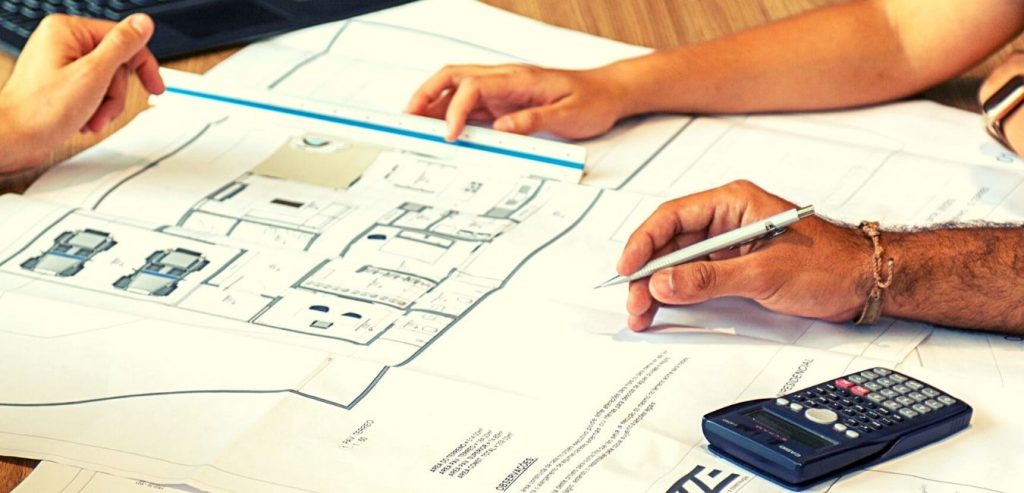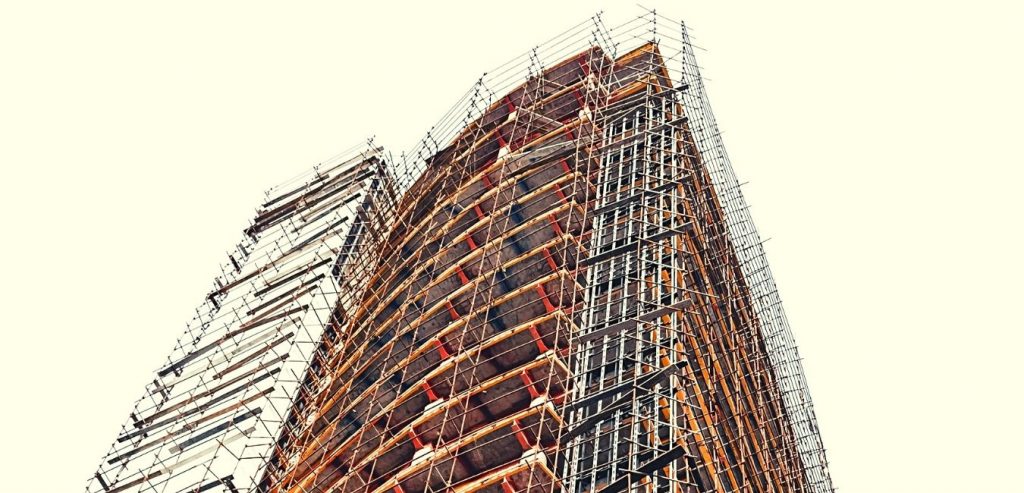Construction planning is the first step in integrating all the project activities within a given time frame and budget. It is the stage where the project team chooses the action plans, policies, and procedures to attain its goals. Therefore, a construction plan works as the central pillar for monitoring and evaluating all project activities.
Table of Contents
What is construction planning?
Construction planning identifies all activities necessary in a construction project, splitting them into smaller activities and organizing them logically, hence determining the required machinery, labor, and materials. A construction plan refers to the set of documents prepared during construction planning. These are the resources, activities, schedule, and budget.
People outside the construction industry might underestimate the necessity of a construction plan, but it is the most cost-effective way of satisfactorily arriving at a final project. The construction plan needs to be as detailed as possible as it is the benchmark for deriving the cost estimate and timeline schedule for the project.
Why is construction planning important?
We have generally described construction planning as the process that guides a project from idea to completion, but you might be wondering what the actual purpose of a construction plan is. There are some perks of having a proper construction plan.
1. It ensures the project is on time and within budget.
Proper construction planning dictates how we need to do construction work and the pace with which we do it. It defines the activities, sequencing, and methods put in place. This ensures that the project is completed on time and within budget.
2. Maximizes productivity and efficiency
A construction schedule helps you improve your productivity by incorporating quality control measures.
3. Better time allocation
A proper plan allows you to allocate time among the stakeholders appropriately. This helps the project stakeholders to plan their time well. Total control of your project reduces the probability of overruns and delays.
4. It improves safety and procurement in the project.
The procurement process in a project will streamline as you can schedule your purchases exactly when needed. Safety performance also improves as you can use the construction schedule to know the workers on-site and ensure they follow safety guidelines.
On the other hand, poor planning means that the project team does not have a clear direction of what the client expects. The unclear definition of objectives leads to low productivity and output, causing the people to work inefficiently. Poor construction planning also causes a project to overrun its budget. The initially set out budget will not be enough to cover the project’s plan.
Who is Involved in Construction Planning?
There are critical parties involved in construction planning, as we will discuss below.

Client and Financer
In most cases, the client and financer are the same parties, but their roles are distinct. The client is the final user, while the financer sponsors the project. When the client and financer are two separate parties, the financer has the prerogative to make and approve changes in a project.
Contractor
This is the general term that refers to people or firms under contractual obligation to provide services in a project. For most projects, there is one principal general contractor with subcontractors working under supervision.
Consultants
These are the parties responsible for providing direction and specialized knowledge in the planning and design of a project. Consultants are familiar with commercial projects as clients engage them for their expertise in specific knowledge areas.
Suppliers
Suppliers sell the materials and services needed in a project.
Engineers and architects
The architects develop the project’s conceptual design, whereas the engineers ensure that the plan works. The engineer’s role is to ensure that the designs are workable and structurally sound. The architect also focuses on permits and project details.

The stages of construction planning
Construction planning is a daunting process, especially in a large project. For small projects, the contractor can work without a construction plan.
The process of construction planning is an enormous undertaking, as we will discuss below.
1. Outline the key components of a project.
The first step is to identify the key components and tasks and break them into subtasks to give a granular view of the construction process’s direction. Explaining the plan to the stakeholders leads to commitment and solid bids that are crucial parts of the project plan.
2. Activity sequencing
This may seem like a mundane task, but improper activity sequencing leads to project delays and loss of hours in labor.
3. Duration
The project manager must estimate the period it will take to complete a project. This is important in cost estimation and improving the efficiency of a project.
4. Resource planning
It is necessary to create a comprehensive breakdown of resources needed in a project and assess the budget and other considerations such as storage.
5. Create a schedule and budget
After estimating costs and resource requirements, you should create a budget and a schedule to procure and execute activities.
6. Identify the construction permissions
You need to identify what you need to do to get approval so that your project is in adherence to municipal codes.
7. Select the project team
During construction planning, you need to make up a project team responsible for executing the construction plan.

Construction planning techniques
As much as we try to stay organized in construction, construction planning happens to be one of the biggest challenges in a project.
There are different construction planning techniques, and the proper technique can spell the success or doom of a project. This, of course, leads to the obvious question, which construction planning technique should I use?
There is no correct answer to this as each strategy has its pros and cons. We will discuss below some of the best construction planning techniques that we can use.
Critical Path Method (CPM)
The Critical Path Method is the most used in construction planning. It is called the critical path as it calculates the minimum time needed for activity by computing possible start and finish times. Graphs best illustrate the critical path and encircle each activity with its details. It then uses arrows to calculate the critical path. This planning technique is crucial as it creates a planning schedule for the construction team and establishes a basis for tracking activities during construction.
Program Evaluation and Review Technique (PERT)
Program Evaluation and Review Technique (PERT) is a construction planning technique that calculates the time needed to finish a project realistically. PERT is similar to the critical path method as we use it to estimate the time one needs for a project. However, PERT has three different time estimates. These are:-
- The shortest probable time a task will take
- The likely time a job will take
- The longest possible time a job might take
PERT is calculated from back to front as the end date is fixed, but the contractor might have front-end flexibility.
Line of Balance (LOB)
The Line of Balance is a planning technique employed where a project has blocks of repetitive work such as pipelines, tunnels, roads, and rail. It collects and measures information concerning completion, cost, and time. It shows the status, timing, background, and phasing of a project. It, therefore, compares actual progress in a project and forecasts future performance.
Q Scheduling
This is also known as quantitative or queue scheduling. It uses the bar chart format to show the materials used in different locations and times in a project. This type of planning helps workers manage and know the materials they need and at what times. They can, therefore, properly use materials and in sequence, avoiding disrupting the work and simultaneously tracking the budget.
Resource-Oriented Scheduling
This construction planning method focuses on the project’s resources and prioritizes the best way of using those resources. Resource-oriented scheduling considers the resources needed before and assigns the use efficiently throughout a project’s lifetime. The resources might be machinery, labor, space, or anything else in limited supply but desirable to project teams.
Last Planner System® (LPS)
This is a construction planning technique designed to produce a predictable workflow in the design, construction, and commissioning of projects. It is not a tool, but it works well with other critical path methods. The last planner method creates a bridge between the project team that will execute the construction process and runs it. By doing this, they can identify the obstacles beforehand and eliminate them.
Gantt Chart
The Gantt Chart, too, is not a technique but is a scheduling tool. It is a chart used by stakeholders to assess the level of dependency between activities.
It, therefore, helps the stakeholders identify the duration of activities and their critical paths. The Gantt chart includes the start and end dates of activities and a summary of activities in a project. It, however, lacks the complexity of approaches that have the resources and materials needed to complete a task. Gantt Charts are particularly important in creating hierarchy in projects by showing which projects need immediate attention and which ones can follow later.
How to Make the Construction Plan
Every construction project is unique. Construction projects are temporary and linear, but they follow the same style of working. The different modes of communication present varying expectations. When dealing with a team that has temporarily come together to complete a project, a strategic plan becomes increasingly important.

Below are the steps that are undertaken to make a construction plan.
The Initiation
This is the first step where the idea we assess and the feasibility of the project. This is the conceptual stage where we identify the objectives of the project.
Work Tasks
The next step in planning is outlining the activities necessary to complete a project. These activities are then divided into sub-activities to have a granular view of the project.
Material Resources
The material resources vary depending on a project’s location and scope. To accurately measure material resources, the project manager needs to compensate for factors such as wastage and spillage. A final contingency rate is added to the material resources to avoid shortages during construction.
Labor resources
Labor estimation is a challenging part of resource planning. A labor shortfall is harder to cope with compared to an equipment shortfall. You, therefore, ideally need the correct number of people with the right skills at the right time to avoid labor fluctuations. After estimating the material and labor resources required, the next step is activity sequencing. In assessing labor resources, you will also need to decide on the team and define who will lead and execute the plans.
Cost Estimation
After computing all the resources needed, the next step is cost estimation. Cost estimation estimates for all the resources necessary for the project and then calculates the total project budget. When the project is in motion, the cost estimates are used to assess whether the project is within budget. If the initial cost estimate is too high, the stakeholders can decide to scale down on the project and fit what they can afford.
Sequence and Scheduling
The project manager needs to determine the order in which the activities need to be completed. This appears to be a small task, but it is essential. Improper activity sequencing leads to wasted resources and costly project delays.
As you can see above, the construction planning process is a complex undertaking, but it does not have to be overly complicated. You can map out everything, such as tasks and due dates, and organize them using powerful tools such as the Gantt Chart.
Summary
A construction plan keeps all project stakeholders in the loop from pre-construction to project closeout. You can therefore make better-informed decisions that land your projects on time and budget.
Using construction techniques such as the critical path method helps you plan, capture, and manage your resources, allowing your team to work effectively. A construction plan will give you real-time visibility into your project’s progress. With clarity in the construction plan, it is easy to accomplish a lot of the work in the project swiftly.

